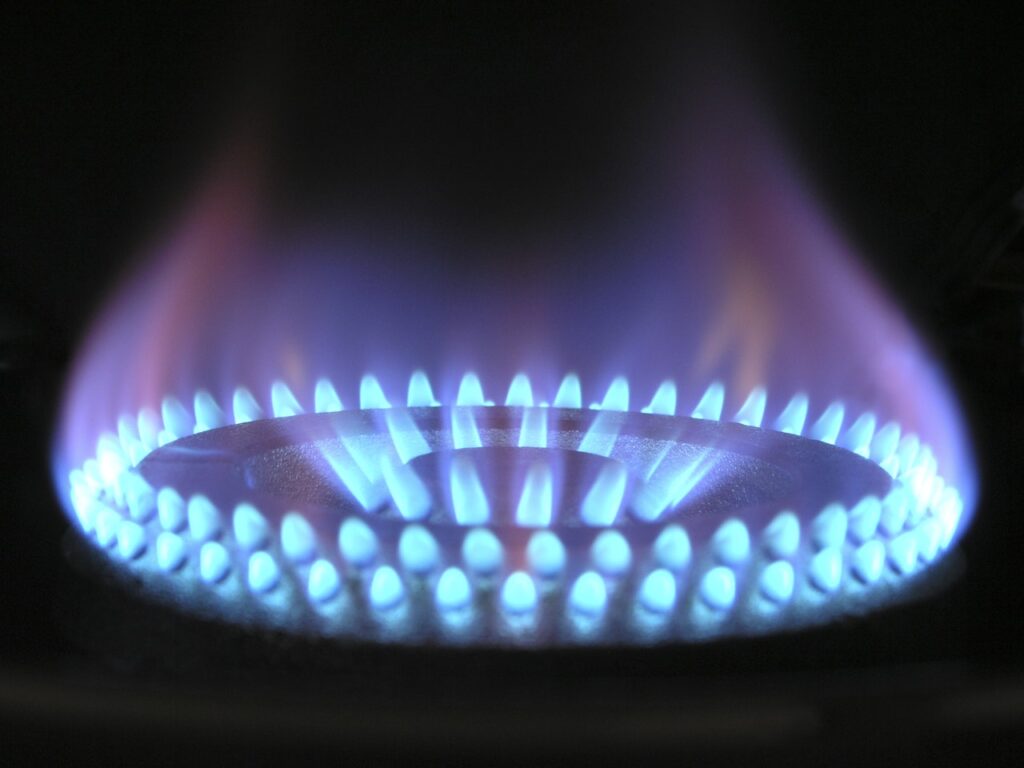2. Literature Review
2.1 Need For Pipelines to Transport Gas
The technologies like hydraulic fracturing have given birth to a new era of oil and gas boom in USA. Pipelines and the recent boom in oil and gas have increased the demand for its transportation. Pipeline is considered as an extremely safe technique to transport gas across the country (Mokhatab and Poe). The statistics show that almost 99.999% of the times petroleum products are successfully reach its desired destination. Pipeline organizations are cognizant of the environmental, security, health and safety concerns hence take adequate measures to safeguard the community and overall regional interests (Strogen and Horvath). The companies use programs like integrity management to inspect and evaluate in order to maintain quality of pipes. These programs have decreased probability for any hazard that can lead towards a major failure (Oldenburg, Stevens and Benson).
The basic need for pipeline is in light of the fact that if pipelines won’t exist the streets would be overwhelmingly populated by trucks to meet with the growing consumer demand. Hence pipelines are a feasible way for transporting the petroleum products while being competitive. In comparison to the transportation via trucks, pipeline is 70 times far better way to transport since trucks have killed 4 times more people since 2005 to 2009 while only transporting fraction of petroleum transported via pipelines (Dougherty et al.).
2.2 Flaring of Natural Gas
Flaring methodology is a technique used for safe disposal of methane and other element of natural gas in case of it cannot be economically captured and consumed. The process converts CH4 in to CO2 and H2O that is safe for venting. Flare combustions depend on the composition of the gas and air to fuel ratio. An optimally operating unit will combust 98% of methane in to CO2.
The process for the gas flaring is the gas emission are collected and transported via flares headers to a vertically elevated flare. Usual process indicates the gas is steamed to reduce the formation of black smoke. It is taken care the process is not over steamed where it would reduce efficiency and increase emissions. To completely burn the gas it is kept burning in small quantity like a pilot.
Formula for complete combustion: CH4+2(O 2+3.76N 2) → CO 2+2H 2 O+7.52N 2
2.3 Oil and Gas Basins
The market research and statistics in terms of financial grows for following regions is depicted
2.3.1 Eagle Fort and Bakken
The gas production calculations from Eagle Ford and Bakken have been recorded to rise 1.6 mn b/d in January 2013 and an annual increase is recorded to 900,000 b/d above 2012 statistics and levels are expected to top 3.2 mn b/d combined in 2016 (Eia).
2.3.1.1 Eagle Fort
It can be claimed that Eagle Fort is quite possibly the largest singular economic development play during entire history of state of Texas. This basin has recorded single handedly $25 billion impact on the local economy of South Texas in 2011 (Loomis). Refer to Appendix 2 for details of sites involved in gas extraction.
2.3.2.1 Bakken
Accelerated development activity is basically the primary cause of production gains in Bakken formation and primarily the major contributor is horizontal drilling plus hydraulic fracturing (Meissner). According to department of mineral resources of Nor Dakota Bakken there were total of 4141 production wells in 2012. Two major locations are Watford city and Williston (Price et al.).
2.3.2 Permian Basin
Permian Basin is another location in the west Texas and to south east of New Mexico, this location is known for it 30 billion barrels as reserves. In addition the region is responsible for 17% in overall national comparison and 2/3 of Texas’ crude oil (Plante). The region production is so significant that its reserves are only second to Alaska. Refer to appendix # 3 for current production sites.
2.3.3 Illinois Basin
Illinois Basin expands around 60,000 square miles in Illinois, Kentucky and Indiana, (refer to Appendix # 4) there are in total 32,100 oil and gas production wells. This count contains 10,500 class-2 injection wells and furthermore 1750 gas storage wells in the basin (Agyarko and Mansoori). The new shale discovery has reignited the boom and 1500 operators control these wells. The oil and gas division carries 22000 inspections that result in around 3,500 enforcement actions.
2.3.4 Noibrara Basin
Located in Northwest Colorado and Southeast Wyoming Noibrara is a crude oil and liquid rich play (Appendix 6). The reserves that are located within the basin are formulated with the combination of marl/shale/sandstone extending to the depths of 5500-8500 and contains separate zones (appendix 7) like A, B, and C known as benches (Newell and Iler).
2.4 Capturing Gas and Its Feasibility
2.4.1 Methane Emission
According to Allen et al. among the GHGs Methane is the second most dominant gas being released or emitted in United States of America. Appendix 8 shows the emission of methane gas as per area and appendix 9 shows the emission by source.
The Caulton et al. explains emission of methane gas are becoming a significant concern due to rising global warming challenges and particularly the emissions from pipelines in shape of losses are raising concerns couple with falling oil and gas prices the manufacturers are further motivated to reduce cost and initiate profitable earning.
The research shows that there are around 1600 compressors stations in the vicinity of transmission sector in US. These stations are responsible for emitting 49.6 billion cubic feet (bcf) methane. These losses are equivalent to multi-billions of dollars in economic loss.
2.4.2 Methane Recovery: Maintaining Pressure in offline Compressors
Appendix 10 shows the process of maintaining pressure in offline compressors this phenomenon helps to capture methane gas and reduce fugitive methane loss by 0.95 Mcf/hr. that accounts for 68% of reduction in losses. This is the scenario when blow down valve is closed.
2.4.3 Methane Recovery: Route offline compressors from gas to fuel
The working of the process is when blow down valve is connected to fuel gas system. Then the compressor internalises the pressure as per fuel gas pressure that is 100 to 150 pound per square inch. This process enables elimination of methane vents and the process reduces fugitive methane losses by 1.275 Mcf/hr. that is 91% reduction.
2.4.4 Methane Recovery: Keep pressurized and install a static Seal
An automatic system is installed in place where it activates rod-packing seal on shutdown and when the system starts the seal is automatically removed. This process eliminates the leaks caused due to compressors seals being offline. Responsible for reducing 1.25 Mcf/ hr. (89%)
2.4.5 Comparative Analysis of Three options
Appendix 11 shows detailed comparative analysis of the three options discussed. The analysis shows the second option is most effective in saving cost in terms of dollar amount saved and using this method having 3,022 cylinders or 577 compressors results in 1,580,000 Mcf/yr. gas savings.
2.5 Pipeline
Appendix # 1 shows various different pipeline companies and provides statistics to compare various pipes to understand various factors.
2.5.1 Pipeline Statistics
The need for pipeline is due to the distances that need to be covered, the basins are around 500-1000 miles away from the mainland consumer locations. Pipelines are considered as the primary means of transporting petroleum products. Pipelines are considered safe and efficient due to most of these pipes are buried underground.
In USA the pipeline operators have been developing and expanding their businesses. The investment on pipeline for oil and gas raised to double of last seven years statistics in 2013. Appendix 1.1 and 1.2 show details of pipeline millage coverage and revenues. Appendix 18 shows pipeline efficiency and a background analysis.
2.5.2 Pipeline Efficiency
The interstate gas pipeline “effectiveness” can be seen from two fundamental points of view: transportation productivity and financial proficiency. Pipeline effectiveness in terms of monetary effectiveness depends on delivering customers with lowest possible rates, these are dependent on managing both fuel and transportation rates. Dollar amount per thousand cubic feet determines the financial effectiveness. On the other hand transportation efficiency is dependent on the overall system design. The over all system design is also based on efficiency of individual components and how system is managed and operated. Amount of fuel is measured by the amount of fuel expended or electric power utilized (KW or Btu/Mcf).
2.5.1.1 Hydraulic Efficiency
In pipeline the transportation efficiency is affected by the measure energy lost during the process like pressure drop or due to friction that is caused by the gas travelling with in the facility. The feasibility of the pipeline is measured by technology applied to reducing friction and pressure drop and increasing hydraulic efficiency.
2.5.1.2 Thermal Efficiency
This the measure for prime mover that is either, turbine, engine or a motor used to run a compressor. In explaining feasibility of the gas pipeline thermal efficiency means the how much of the input energy is converted into useful energy that is utilized in running the turbine. The energy not converted or utilized is a waste and reducing the feasibility of the pipeline transportation system.
2.5.1.3 Compressor Efficiency
In transportation of the gas via pipeline the compressor hold a vital position it is the measure of how much energy is utilized to compress the gas in comparison to the over all energy expended by the compressor. Poor compressors heat the gas instead of actually increasing its pressure hence over all efficiency decreases.

